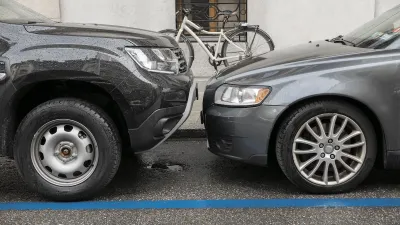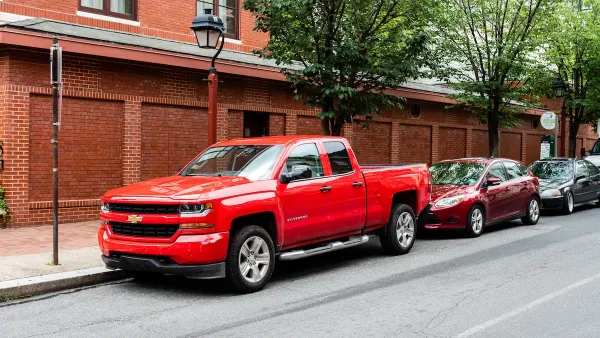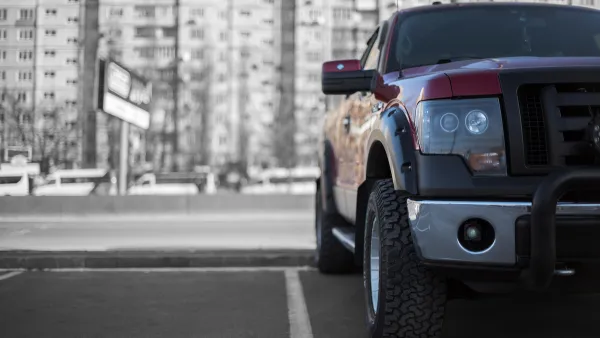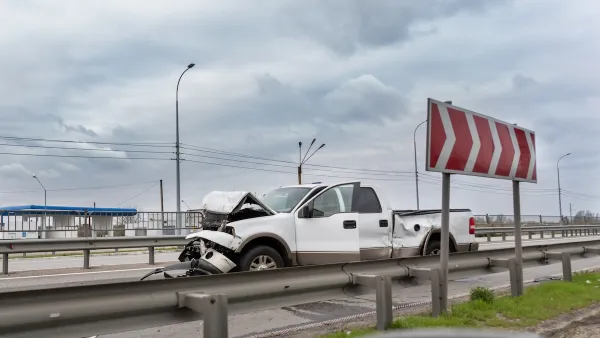Vehicles with taller front-end designs are more likely to injure pedestrians even when traveling at lower speeds.

More evidence confirms that vehicles with higher hood lines — meaning large trucks and SUVs — are more likely to injure pedestrians in the event of a crash, according to new research from the Insurance Industry for Highway Safety.
As Gersh Kuntzman reports in Streetsblog USA, pedestrians struck at 27 miles per hour by median-height trucks have an 83 percent chance of suffering “moderate injuries,” compared with a 60 percent chance for median-height cars.
This indicates that taller vehicles pose more danger to people outside the cars even when traveling at lower speeds. “For example, as crash speed increases from 15 mph to 35 mph, the risk of a serious injury goes from 9 percent to 52 percent when a median-height car is involved. With a median pickup, the risk shoots up from 11 percent to 91 percent.”
In a statement, the IIHS noted, “The findings point to the need for policymakers and traffic engineers to account for the makeup of the U.S. fleet when thinking about speed limits and traffic-calming.” The report recommends that automakers modify front-end designs to improve safety and add automatic braking systems to vehicles.
FULL STORY: Even at Slower Speeds, SUVs and Pickups are a ‘Big’ Problem for Pedestrians

National Parks Layoffs Will Cause Communities to Lose Billions
Thousands of essential park workers were laid off this week, just before the busy spring break season.

Retro-silient?: America’s First “Eco-burb,” The Woodlands Turns 50
A master-planned community north of Houston offers lessons on green infrastructure and resilient design, but falls short of its founder’s lofty affordability and walkability goals.

Delivering for America Plan Will Downgrade Mail Service in at Least 49.5 Percent of Zip Codes
Republican and Democrat lawmakers criticize the plan for its disproportionate negative impact on rural communities.

Test News Post 1
This is a summary

Test News Headline 46
Test for the image on the front page.

Balancing Bombs and Butterflies: How the National Guard Protects a Rare Species
The National Guard at Fort Indiantown Gap uses GIS technology and land management strategies to balance military training with conservation efforts, ensuring the survival of the rare eastern regal fritillary butterfly.
Urban Design for Planners 1: Software Tools
This six-course series explores essential urban design concepts using open source software and equips planners with the tools they need to participate fully in the urban design process.
Planning for Universal Design
Learn the tools for implementing Universal Design in planning regulations.
EMC Planning Group, Inc.
Planetizen
Planetizen
Mpact (formerly Rail~Volution)
Great Falls Development Authority, Inc.
HUDs Office of Policy Development and Research
NYU Wagner Graduate School of Public Service





























